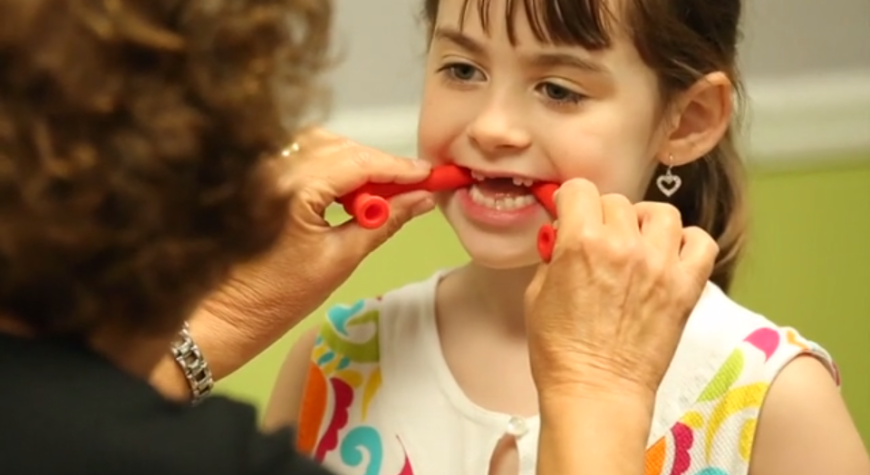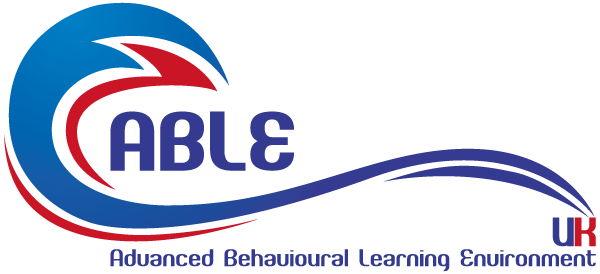A Comprehensive Guide to Understanding Speech and Language Development Milestones

Introduction to Speech and Language Development
As parents and caregivers, we often eagerly anticipate our child’s first words, celebrating each new expression as a milestone in their development. However, understanding speech and language development is much more complex than waiting for those initial utterances. It encompasses a range of skills that children acquire over time, from understanding others to expressing themselves effectively.
Speech and language are the tools we use to communicate with the world around us. They are vital for cognitive development, social interaction, and learning. In the early years of life, children go through rapid growth in these areas, and each child’s journey is unique. Yet, there are common patterns and stages that we can observe to ensure our children are on track.
In this guide, I will delve into the intricacies of speech and language development milestones. We will explore how these milestones unfold and why it is essential to monitor them closely. Understanding these milestones can provide reassurance, guide our support, and help identify when there might be a reason for concern.
Understanding Speech and Language Development Milestones
Speech and language development milestones are indicators of typical progress in a child’s ability to understand and use language. Speech refers to the physical ability to produce sounds, while language is the system through which we communicate and understand concepts, ideas, and emotions.
These milestones are not just about when a child says their first word. They encompass a spectrum of skills, including the ability to listen, understand gestures, respond to sounds, comprehend words and phrases, and construct sentences. Speech and language development begins long before a child speaks their first word and continues as they grow and refine their abilities to communicate more complex thoughts and ideas.
It is essential to recognize that these milestones serve as a general guide. Each child develops at their own pace, and there is a wide range of what is considered “normal.” However, understanding these milestones can help us identify when a child might benefit from additional support or intervention.
The Importance of Monitoring Speech and Language Development Milestones
Monitoring speech and language development milestones plays a crucial role in ensuring that children reach their full communication potential. It allows us as parents, caregivers, and educators to understand where a child is in their development and to provide the right support at the right time.
Early identification of potential delays or disorders in speech and language development is critical. The sooner we can address these issues, the better the outcome for the child. Timely intervention can mitigate long-term effects on learning, social skills, and self-esteem. Moreover, monitoring these milestones can also reassure us when a child is developing typically, allowing us to relax and enjoy the process of their growth.
Being proactive in monitoring these milestones is not about creating anxiety or pushing a child. Instead, it’s about creating an environment that nurtures development and catches any potential issues early on.
Typical Speech and Language Development Milestones by Age
When discussing typical speech and language development milestones, it’s helpful to break them down by age. Each stage of a child’s life is characterized by specific milestones that pave the way for more advanced skills.
Birth to 12 Months
In their first year, infants start by responding to sounds and gradually begin to recognize voices, especially their parents. They coo and babble, and by the end of this period, they might say simple words like “mama” or “dada,” although they may not understand their meaning.
12 to 24 Months
As toddlers, children begin to understand more words than they can say. They start to follow simple commands and use a variety of words and two-word phrases. At this stage, they also begin to recognize names of familiar objects and people.
2 to 3 Years
By this age, children’s vocabulary expands rapidly, and they begin to form sentences. They understand more complex instructions and start to use language to express their needs and describe their experiences.
3 to 4 Years
Children’s sentences become more complex, and they can engage in simple conversations. They understand the concept of “taking turns” in speaking and begin to grasp basic grammar rules.
4 to 5 Years
At this stage, children’s language becomes more sophisticated. They tell stories, understand more abstract concepts, and are better able to communicate with both adults and peers.
These milestones represent a general pattern of development. However, we must remember that individual variation is common, and a range of factors can influence a child’s progress in acquiring speech and language skills.
How to Support Speech and Language Development at Home
Supporting speech and language development at home is a vital part of nurturing a child’s overall growth. There are numerous strategies we can adopt to create a language-rich environment that encourages communication.
Firstly, engaging in regular conversation with your child is fundamental. Talk about your day, describe actions as you do them, and narrate stories. This exposure to language provides the foundation for their own speech and language skills.
Reading together is another powerful tool. Through books, children hear new words and concepts, see illustrations that support comprehension, and learn the rhythm and flow of language. Even before a child can speak, reading to them can foster language development.
Furthermore, playing with your child can significantly enhance their language skills. Interactive play, such as role-playing or games that involve taking turns, can teach social aspects of communication. Additionally, encourage activities that build listening skills, such as following directions in fun tasks or listening to music and identifying sounds.
By incorporating these practices into daily life, you lay the groundwork for strong speech and language development. It’s about being intentional and seizing opportunities to turn everyday moments into learning experiences.
When to Seek Professional Help for Speech and Language Development
While variations in the timeline of speech and language milestones are typical, there are signs that may indicate a need to seek professional help. If a child is not meeting milestones within the expected timeframes, or if they are exhibiting certain behaviors, it may be prudent to consult a speech-language pathologist (SLP).
Red flags that might warrant professional evaluation include not babbling by 12 months, not saying single words by 16 months, not combining words by 24 months, or any loss of speech and language skills at any age. Additionally, if a child seems to struggle with understanding others or expressing themselves compared to peers, it’s essential to seek guidance.
An SLP can conduct a comprehensive assessment to determine if there is a delay or disorder present and what might be causing it. They can then provide targeted interventions and strategies to support the child’s development.
Seeking help is not about labeling a child or jumping to conclusions. It’s about ensuring that every child has the support they need to communicate effectively and thrive.
Common Speech and Language Disorders in Children
Several speech and language disorders can affect children, and it’s beneficial to be aware of these to better understand and identify them. Some of the more common disorders include:
- Speech Sound Disorders: These involve difficulty in articulating certain sounds or sound patterns, which can make speech difficult to understand.
- Language Disorders: These encompass problems with understanding or using language. A child may have a limited vocabulary, struggle with sentence structure, or have difficulties in storytelling.
- Stuttering (Fluency Disorder): This is characterized by interruptions in the flow of speech, such as repeating sounds, prolonging sounds, or blocks of speech.
- Voice Disorders: These involve issues with the quality or use of the voice, such as hoarseness, nasality, or loss of voice.
Recognizing these disorders early can facilitate timely intervention and support, which are crucial for overcoming challenges and improving communication skills.
Treatment Options for Speech and Language Disorders
Once a speech or language disorder is identified, there are various treatment options available. The approach will depend on the specific needs of the child and the nature of the disorder.
Speech therapy is the most common treatment and involves working with an SLP to develop targeted strategies and exercises to improve communication skills. Therapy might focus on articulation, language development, fluency, or social communication skills.
In some cases, assistive devices or technology may be employed to support communication, especially for children with severe speech or language impairments. Additionally, there may be a need for collaboration with other professionals, such as occupational therapists or audiologists, depending on the underlying causes or related issues.
Treatment is personalized, and progress is regularly assessed to adjust strategies as needed. With the right support, many children with speech and language disorders can make significant improvements.
Resources for Understanding Speech and Language Development Milestones
Understanding speech and language development milestones can be facilitated by a wealth of resources available to parents and caregivers. These resources can include books, websites, and organizations dedicated to speech and language development.
Organizations such as the American Speech-Language-Hearing Association (ASHA) offer extensive information on development, disorders, and finding professional help. Many educational websites provide milestone checklists and activities to support development at home.
Local resources can also be valuable; many communities have early intervention programs or support groups for parents. Libraries and bookstores have sections dedicated to child development, where one can find books on the subject.
Utilizing these resources can empower us to be informed advocates for our children’s communication development, providing them with the best possible foundation for the future.
Conclusion
Understanding speech and language development milestones is an essential aspect of nurturing a child’s growth and ensuring they can communicate effectively. By familiarizing ourselves with these milestones and how to support development at home, we can provide an environment that encourages our children to thrive in their communicative abilities.
When concerns arise, seeking professional help can make a significant difference, and with the right treatment, many children can overcome speech and language challenges. The journey of speech and language development is a foundational part of a child’s life, and with our support, they can reach their full potential.
I hope this guide has provided you with valuable insights into understanding speech and language development milestones. May it serve as a resource for fostering the skills that will enable your child to express themselves and engage with the world around them confidently.

2 comments
Iliana Kautzer
June 23, 2024 @ 4:33 pmYou have a gift for writing engaging content. I was hooked from start to finish.
Mable Rawlins
September 4, 2024 @ 4:26 pmHaving read your blog, you obviously know what you are talking about. I’m sure visiting my page 71N about Thai-Massage will be worth your time!